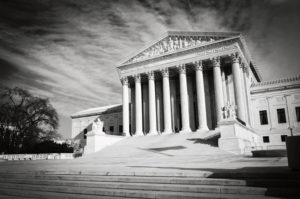Holding Taxpayers Hostage: Analysis of Espinoza v. Montana Department of Revenue

On June 30, the US Supreme Court issued a frustrating decision in Espinoza v. Montana Department of Revenue. At issue was the constitutionality of Montana’s tax-credit program, which gave dollar-for-dollar tax credits to anyone who donated to organizations that grant scholarships to private elementary school students. However, the program benefited almost exclusively religious institutions.
As such, the Montana Supreme Court held the program violated the state constitution’s “no-aid” provision, prohibiting: “direct or indirect payment from any public funds or monies . . . for any sectarian purpose or to aid any church [or] school . . . controlled in whole or in part by any church, sect, or denomination.” Parents of children who anticipated receiving scholarship aid to send their children to private religious institutions sought review claiming religious discrimination under the Free Exercise Clause.
On review, the Supreme Court, in a 5-to-4 decision, held that:
[t]he application of the Montana Constitution’s “no-aid” provision to a state program providing tuition assistance to parents who send their children to private schools discriminated against religious schools and the families whose children attend or hope to attend them in violation of the free exercise clause.
This holding conflicts with both separation of church and state precedence and the rules governing Supreme Court jurisdiction over cases. Justice Sonia Sotomayor argued in her dissent that the court violated “Article III principles older than the Religion Clause.” The Montana Supreme Court’s ruling ended the program in its entirety. Thus, by the time this case reached the Supreme Court, there was no program left to dispute. As Justice Sotomayor made clear:
The threshold problem . . . is that [the] tax benefits no longer exist for anyone in the state. The Montana Supreme Court invalidated the program on state-law grounds, thereby foreclosing the as applied challenge petitioners raise here. Indeed, nothing required the state court to uphold the program or the state legislature to maintain it.
Sotomayor concluded: “Not only is the court wrong to decide this case at all, it decides it wrongly.” The conservative bloc went out of its way to issue a decision on moot legislation. The court did not, nor could it, require the Montana legislature to reenact the dead program.
Beyond going out if its way to decide a case it shouldn’t have taken, the majority also bent over backwards to rule on an issue not at all before the court. “[P]etitioners did not allege the no-aid provision itself caused their harm or that invalidating the entire tax-credit scheme would create independent constitutional concerns,” wrote Sotomayor. Nor did the Montana Supreme Court address whether the no-aid provision generally conflicts with the Free Exercise Clause. Yet, the conservative bloc got dangerously close to invalidating Montana’s no-aid clause altogether.
Fortunately, state no-aid clauses generally remain valid and enforceable. The Montana Supreme Court noted in its decision that no-aid provisions serve the important purpose of ensuring government aid is not used for sectarian or religious education. In his majority opinion, Chief Justice John Roberts did not hold otherwise but instead argued “those considerations were not the . . . basis for applying the no-aid provision to exclude religious schools . . . . So applied,” he concluded, “the provision impose[s] special disabilities on the basis of religious status and condition[s] the availability of benefits upon a recipients’ willingness to surrender [its] religiously impelled status.” The majority opinion defines the application in this case to a status-based discrimination, in conflict with its holding in Trinity Lutheran. Importantly, the opinion points to several examples of no-aid provisions permitting publicly funded religious schools, “through vouchers, scholarships, tax credits, and other measures.” Such no-aid provisions do not conflict with the Free Exercise Clause, nor is there enforcement invalidated by this decision.
Even so, Roberts held: “A state need not subsidize private education. But once a state decides to do so, it cannot disqualify some private schools solely because they are religious.” This assertion flies in the face of our founding father’s intent behind separation of church and state. Justice Stephen Breyer, in his dissent, detailed this intent in the failure of Virginia’s Assessment Bill in 1786, which sought to levy taxes for religious teachers. “James Madison argued that compelling state sponsorship of religion in this way was a signal of persecution that degrades from the equal rank of citizens all those whose opinions in religion do not bend to those of the legislative authority,” he wrote. The bill threatened to “destroy that moderation and harmony which the forbearance of our laws to intermeddle with religion, has produced among its several sect.” Following the Assessment Bill, Virginia enacted a new bill written by Thomas Jefferson. As Breyer recounted, the preamble made clear that “compel[ling] a man to furnish contributions of money for the propagation of opinions which he disbelieves is sinful and tyrannical.”
Conservatives fervently defend protecting the history of the United States. Yet, the conservative-leaning SCOTUS now leaves in its wake a murky and dangerous precedence for public funding of private religious institutions, opposing America’s history of preventing just that.
